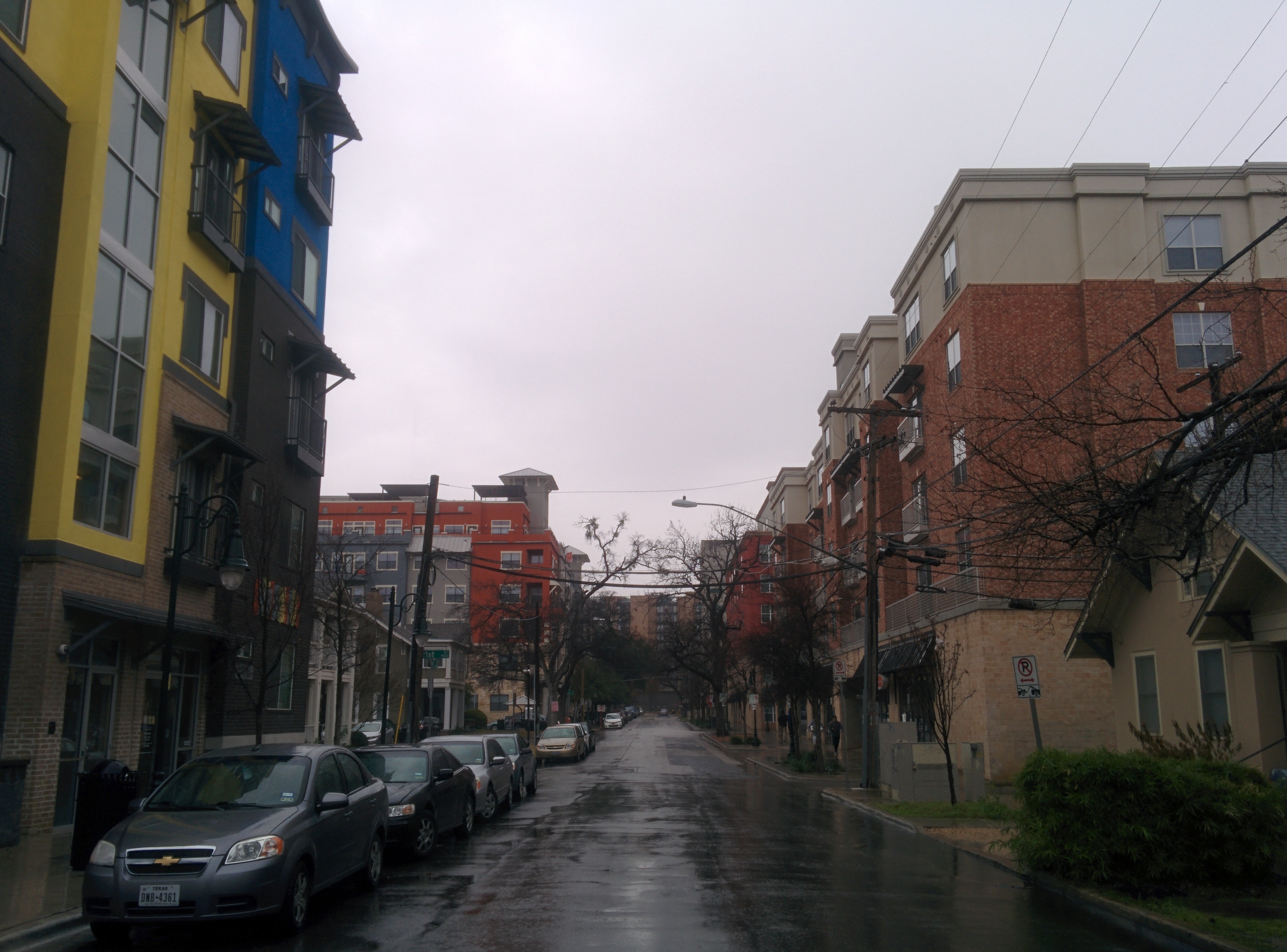I had the honor and pleasure of traveling to the city that never builds, San Francisco, to speak to people from a truly wonderful organization, the San Francisco Bay Area Renters’ Federation. San Francisco is like a larger, older, more extreme version of Austin. Both cities have gorgeous natural environments and pleasant, mostly snow-free climates. Both have managed to catch economic lightning in a bottle and create a special environment in which businesses grow and create well-paying jobs, as well as large ecosystems of middle-class jobs that surround them. And both cities have become places that people move to from around their respective states, the country, and the world to start their careers, start families, and settle down.
Sadly, both have also failed completely to build housing needed in the central city to accommodate both their existing residents and those who want to move there. I got to see in person the frankly dystopian future that awaits for Austin if we continue down this path. My lessons learned:
It can get worse. Much worse.
A lot of people think Austin has seen an incomparable rise in prices and that prices can’t go much higher. This is wrong on both accounts. San Francisco’s prices are both much higher and rising much faster than Austin’s. When I told people in San Francisco how much a condo in my downtown complex recently sold for, their mouths were agape at how inexpensive it was and I’m fairly certain a few of them started searching “Austin jobs” on their phones before my talk was over. Most of my friends in the Bay Area have jobs in San Francisco and live in Oakland; living in San Francisco itself is out of reach.
Preventing Luxury-style Housing Doesn’t Prevent Luxury-style Prices
It is, to say the least, difficult to build in San Francisco. This proposed Transit-Oriented Development at a major BART station in the overwhelmingly popular and expensive Mission District, has been met with a list of demands from a large coalition of organizations that includes not only stopping all work on the project, but simply handing the land over to the protesters. Projects that make their way through most of the planning process are still often killed by the Board of Supervisors.
I stayed at a spare bedroom Airbnb near the project above. The place I stayed in was not only “not luxury” by Austin standards, it was frankly somewhat rundown. This is not atypical for the area. By Austin standards, San Francisco housing is simply not very up-to-date. Many units have split bathrooms, no central AC (or any heating at all), and flaking paint on the exteriors. And yet these flats cost not only more than anything in Austin, they cost almost as much as luxury housing in San Francisco does.
In an attempt to avoid San Francisco being “invaded” by wealthy tech workers, many have fought tooth-and-nail against the trappings of wealth: new housing, “Google buses” from SF to Silicon Valley worksites, etc. But doing so has completely failed to stem the tide of actual tech workers, who are perfectly willing to occupy formerly affordable housing at luxury housing prices.
Opposition to development is a tendency unsolved by particular improvements
Many Austin policy fights regarding creating more housing revolve around minimum parking regulations (e.g. ADUs/granny flats/back houses, microunits). Those opposed to reducing them argue that, given that this is Austin, there’s not enough good public transportation for people to live without cars, and thus new housing must be accompanied by new parking. San Francisco’s transit mode share is an order of magnitude higher than Austin’s, minimum parking regulations are much lower and there are even maximum parking regulations. And yet, as you can see above, new housing near transit is still fought against vigorously. So to the people who argue that in order to get new housing, we need transit or grocery stores or new sewer pipes or whatever first, I see no evidence that, absent any of those problems, opposition to new housing lessens. The way to get new housing is to get new housing. This doesn’t devalue the work for good transit: it’s just that creating good transit doesn’t magically transmute anti-development voices into pro-development ones, even those claiming lack of transit as the reason for opposing development.
opposition to development is a tendency that happens at all scales
The Mission District consists largely of attached buildings (that is, buildings whose side walls touch). This is not only on major streets, but in a full 2-dimensional grid. The density this achieves is frankly unimaginable in Austin. West Campus, Austin’s secret midrise district, is pretty low-density by Mission standards. And yet the exact same disagreements play out in the Mission as in low-density Austin neighborhoods, using almost the exact same words.
The same issues are happening in many places
San Francisco and Austin differ in particulars. San Francisco is more built out, more expensive, has better transit, worse development procedures, and different zoning rules. The Bay Area has to deal with problems arising from multiple jurisdictions in a way that Austin doesn’t. But even though the particulars of the disagreement differ, the parameters of the discussion are still largely the same. I am so heartened to see good folks working to improve their city in the Bay Area, because their ideas can carry over to us and our ideas can carry over to them.






